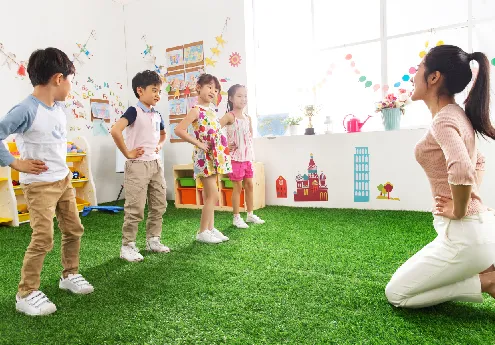
- Afrikaans
- Arabic
- Belarusian
- Bengali
- Czech
- Danish
- Dutch
- English
- Esperanto
- Estonian
- Finnish
- French
- German
- Greek
- Hindi
- Hungarian
- Icelandic
- Indonesian
- irish
- Italian
- Japanese
- kazakh
- Rwandese
- Korean
- Kyrgyz
- Lao
- Latin
- Latvian
- Malay
- Mongolian
- Myanmar
- Norwegian
- Persian
- Polish
- Portuguese
- Romanian
- Russian
- Serbian
- Spanish
- Swedish
- Tagalog
- Tajik
- Thai
- Turkish
- Turkmen
- Ukrainian
- Urdu
- Uighur
- Uzbek
- Vietnamese
fake soccer grass
Dec . 19, 2024 08:10 Back to list
The Rise of Fake Soccer Grass A Revolution in Sports Turf
In recent years, the popularity of fake soccer grass, also known as artificial turf or synthetic grass, has surged across the globe. This evolution in sports surfaces is reshaping how soccer is played, enjoyed, and maintained, offering both benefits and challenges that warrant a closer examination.
The Advantages of Fake Soccer Grass
One of the primary reasons for the increasing adoption of fake soccer grass is its durability. Unlike natural grass, which can wear out quickly under heavy use, synthetic turf is engineered to withstand the test of time. Withstanding rain, sun, and heavy foot traffic, artificial fields can be used year-round, regardless of weather conditions. This allows teams to maximize their training and playtime, leading to better performance and more promotions of the sport in local communities.
Additionally, the maintenance of fake soccer grass is far simpler than that of natural grass. Keeping a natural pitch in prime condition requires constant watering, mowing, seeding, and fertilizing—tasks that are not only labor-intensive but also costly. In contrast, artificial turf requires minimal upkeep. Regular brushing to keep the fibers upright and occasional cleaning to remove debris are usually sufficient. This significantly reduces costs for schools, clubs, and municipalities, allowing them to allocate funds elsewhere.
Another critical advantage of synthetic turf is player safety. Modern artificial pitches are designed with shock-absorbing materials that help reduce the risk of injuries associated with playing on hard, uneven surfaces. This is particularly vital for soccer, where sudden stops, turns, and rapid accelerations are commonplace. The consistent surface provided by fake soccer grass can help mitigate issues like ankle sprains or knee injuries, promoting a safer gameplay environment.
Environmental Considerations
However, the rise of fake soccer grass is not without controversy, particularly regarding environmental impacts. Critics often raise concerns about the sustainability of synthetic materials, which are derived from petroleum-based products. Although the longevity of fake grass means that it does not need to be replaced as frequently as natural grass, the lifespan does end eventually, and there are questions about how to recycle or dispose of it.
fake soccer grass

Another environmental concern arises from the heat retention properties of synthetic grass. During the summer months, artificial fields can become significantly hotter than natural grass fields. This can create uncomfortable playing conditions, particularly for youth athletes. However, advancements in technology are leading to the development of cool turf options that are designed to minimize heat absorption.
A Growing Trend
Despite the environmental concerns, the adoption of fake soccer grass continues to grow, particularly in regions where climatic conditions render natural grass maintenance challenging. Areas prone to drought or heavy rainfall are increasingly investing in synthetic alternatives to ensure consistent playing surfaces. The trend is not limited to professional leagues; schools and recreational leagues are also turning to faux turf due to its cost-effectiveness and durability.
Moreover, the aesthetic appeal of fake soccer grass cannot be overlooked. Fields that are well-maintained often boast a vibrant green color year-round, creating an inviting atmosphere that can elevate community pride and enthusiasm for the sport. Attractive soccer fields can attract tournaments, events, and new players, further broadening the sporting community.
Conclusion
The rise of fake soccer grass represents a significant shift in how we approach sports turf management. With clear advantages in durability, maintenance, and player safety, synthetic turf is changing the landscape of soccer facilities globally. While environmental concerns merit consideration, the advancements in technology provide a pathway toward addressing these issues without sacrificing quality or playability.
As the demand for soccer grows around the world, so too will the interest in artificial alternatives that can meet those demands effectively. The future of soccer fields may very well lie in synthetic solutions, reshaping both the sport and its accessibility with each passing year. Whether on a professional pitch or a local community field, fake soccer grass is destined to play a pivotal role in the game’s development for years to come.
-
The Benefits of Artificial Turf for Indoors
NewsJul.15,2025
-
How Artificial Grass Suppliers Ensure Quality Products
NewsJul.15,2025
-
Artificial Grass and Pets: A Space for Relaxation
NewsJul.08,2025
-
Balcony & Outdoor Decoration with Artificial Grass
NewsJul.08,2025
-
Best Indoor Artificial Grass for Home
NewsJul.07,2025
-
Best Pet Turf for Dogs: Safe & Durable Artificial Grass Options
NewsJul.07,2025
Products categories









